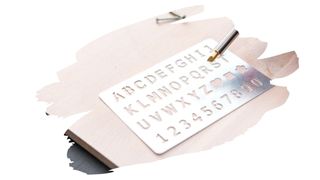Cedar woods beautiful grain looks perfect for wood burning artwork…at least on the surface of it.
But underneath all of that beauty, you will find a lot of tree sap saturating the fibers of this lumber. Enough to give you a real headache if you attempt to wood burn intricate images onto it.
But is this a good enough reason to skip over burning Cedar wood altogether?
Well, in this post, you will learn the four key criteria that all great pyrography timbers need to meet. You’ll also discover why natural Cedar is not the best option for pyrography (and yet heat-treated Cedar wood is).

This post may contain affiliate links to products that we receive a commission for (at no additional cost to you). Learn more here.
What Is The Ideal Kind Of Wood For Pyrography Artwork?
The ideal type of wood is one that is both clean burning and a plain canvas. So, this is why great pyrography woods fall under the following four criteria;
1). They Have Light Toned Grain
Light wood grain contrasts very nicely as a background against those darker burn lines.
Also, lighter grain won’t conceal any detailed shading in your images either.
2). They Have Uniform Grain
This particular criteria has more to do with the clarity of your designs than anything else.
If you burn onto lumber that has very distinct grain lines, (like Oak wood), it will make your drawings appear faded.
Related Post: Beginners Guide To Reducing Oak Grain Contrast (Explained)
3). They Contain Little To No Tree Resin
Wood that contains lots of resinous tree sap/pitch, (such as Cedar), are difficult to work with.
That is because an excessive amount of tree sap can produce a lot of smoke. But, worse still when it comes to pyrography, they can heat up and bubble over.
So, if you are burning an image that needs nice clean lines, bubbling resins are going to mess with it. But, if that otherwise resin-saturated timber has been kiln-dried, then this is a different matter altogether.
You see, when we want to minimize the moisture in freshly cut wood, we need to leave it out to dry for a few months. This is referred to as ‘seasoning’.
Related Post: How To Season Wood (7 Tips)
Now, kiln-drying is a milling treatment that speeds up the process of wood seasoning.
This is done by placing wood into a kiln oven for a number of hours. And this super-heated treatment quickly evaporates the moisture content inside freshly logged timber.
But, one major advantage to kiln drying sap-rich timber, is that this heat-treatment will also get rid of tree sap. So, if a sap-saturated wood has been kiln-dried, then it’ll be fine for pyrography.
Related Post: Is Kiln Dried Wood Safe Enough To Use For Gardens And Landscaping?
4). They Should Not Contain Any Poisonous Compounds
Some types of wood naturally contain toxic compounds in them. Which means that it is too risky (to your health) to burn them.
Also, many types of manufactured woods, such as MDF or Plywood, contain formaldehyde-based chemical glues. Which means that, they too, should not be used for pyrography.
Related Post: Is Plywood Really A Safe Wood For Pyrography?
Basically, only use clean burning non-toxic wood for your next wood burning art piece.
So What Is The Best Type Of Wood For Pyrography?
The best choice for beginners and pros alike is Basswood.
Basswood is an affordable hardwood that grows right across the most northern parts of North America. But, more than that, Basswood more than meets all of the key criteria for good pyrography timber.
Basswoods pale fine uniform grain is the perfect canvas for your wood burning art. And natural solid Basswood doesn’t contain any poisonous compounds that you need to worry about.
Related Post: Is Basswood A Good Wood For Pyrography?
But What About Cedar? Is Cedar Wood Good For Pyrography Too?
Cedar wood, (much like Pine), contains a lot of resinous sap in it. So, this sap-saturated timber is equally as frustrating to burn onto. Especially if you’re working on a drawing that has a lot of shading in it.
What’s more, this lumber has fairly distinct contrasting grain. And that will, of course, impact the sharpness of your images too.
Having said that, kiln-dried Cedar will contain next-to-no tree sap in it. So, heat-treated Cedar is less likely to give you headaches stemming from issues around boiling tree sap.
So, if you’ve got some kiln-dried Cedar wood, feel free to burn into it. Otherwise, that piece of Cedar is best used for practicing simple techniques on, but not much else (pyrography-wise).
To Wrap Up, Here Are The 3 Key Takeaways From This Post…
- 1). The best type of wood for pyrography has light toned unobtrusive grain. And it should contain next-to-no tree sap/pitch, and zero toxic compounds.
- 2). Basswood is one of the best woods for pyrography. Its cream-colored fine grain is a great canvas for your wood burning drawings.
- 3). Cedar wood grain is filled with resinous tree sap. And that tree sap will mess up the clarity of burn lines. However, kiln-dried Cedar does not contain much in the way of tree sap. So, heat-treated Cedar wood can be used for pyrography.



